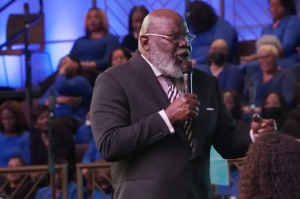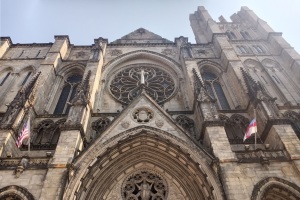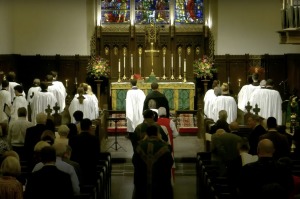Interview: World Relief Indonesia Director on Tsunami Recovery One Year Later
On Dec. 26, 2004, the world’s most powerful quake in four decades struck deep beneath the Indian Ocean off the coast of Indonesia. The quake triggered tidal waves that swept across the Indian Ocean, striking coastal regions of Sri Lanka, India, Indonesia, Thailand, Bangladesh and Malaysia.
One year following the magnitude 9 quake, the World Relief’s Director in Indonesia, Galen Carey, spoke to The Christian Post about the survivors, the rebuilding process and the future of the Tsunami’s hardest hit country, which lost hundreds of thousands of lives last Christmas season.
The following are excerpts taken from the interview, held on Dec. 15.
Where are you located currently?
I am at Medan, the capital city of North Sumatra, Indonesia. I just came from Banda Aceh earlier today.
When did you first begin tsunami recovery work in Indonesia?
I was in the World Relief headquarters in Baltimore when the Tsunami hit. I left for Indonesia on the first of January and I have been there ever since.
I will expect to be here for a couple years more, working on the rebuilding and rehabilitation work and also helping World Relief build a foundation for long term work here because there are many needs that predated the tsunami in which there are the opportunities for us to help poor and suffering people improve their lives and help the Church reach out.
How are the survivors coping after one year?
People are in various stages. I just met with two fishermen this past week who are still highly traumatized. There are other people are moving on with their lives and doing very well. There are a few people who are moving into houses that have been built but there are a lot of people still living in tents, barracks, and temporary accommodations. A lot of people still don’t have jobs so it will be years before the recovery is complete. There has been a lot of progress but there is still a long ways to go.
Would you say that there are more people living in tents or houses at this point?
Approximately ten percent of homes destroyed – mainly on the north and west coast of the tip of Sumatra Island, Aceh province, and smaller number on island of Nias – have been rebuilt or are in the process of being rebuilt. So most of the people who lost their homes are not back in their homes. Of course not all homes were destroyed so people were able to repair their homes. Among those who are displaced, it is divided between those who are in tents and those in what we call “transitional shelters,” such as barracks that have been built by the government.
Is World Relief also engaged in relief work in Nias Island?
Yes we are.
I read that Nias Island, consisting of mostly Christians, was receiving less relief than other parts of Indonesia. Do you know if this is true or have you witness this?
The situation on Nias is somewhat different so it is hard to make an apple-to-apple comparison. Nias was affected by the earthquake and Tsunami on Dec. 26 but not nearly as badly as Aceh. The real serious damage to Nias took place on Mar. 28 in an earthquake considered to be an aftershock from the Dec. 26 earthquake and was much closer to Nias. So the damage on Nias is different. Also the preexisting condition was different. In general, Nias is much less developed than Aceh and other parts of Sumatra. Very poor island and neglected, there are various theories on why it is neglected. It is quite clear that it has been neglected in many ways.
How has World Relief helped rebuild the lives of Tsunami survivors in Indonesia?
We are helping in several areas. The first area is helping people rebuild their homes. The second is we are helping people reestablish their livelihood. The third is we are rebuilding schools and other educational institution. The fourth is we are working in the area of child development.
Is World Relief partnered with any other Christian organizations with its Tsunami work in Indonesia?
We have a number of partnerships with some local Christian NGO (non-governmental organization) and some directly with local churches. For example on the island of Nias we are partnering with the Lutheran Church, which is the largest church on the island, to help people reestablish their livelihood growing chocolate and mahogany trees.
We also have a partnership working with a local NGO called Holi’ana’a, which is helping to restore employment and a source of income.
We also cooperate with the Northwest medical teams in one of our project areas, MAP International, a consortium of Christian NGOs called Aceh Link. We also cooperated with Food for the Hungry and a number of others.
What have you found helpful in working with the local church?
They speak the language. They have good insight on how things are done in Indonesia. They also bring their commitment and relationship into the work because they have a long-standing interest in the people of Aceh and Nias. They have been able to mobilize volunteers, especially during the emergency period. They also help with donations of food, medicine, and volunteers, doctors, nurses, and engineers. Skills like that have been much needed in the rebuilding process.
What can groups such as World Relief and U.S.-based groups offer?
There are several things. American Christians have given generously including financially. There has also been an outpouring of prayers for the Tsunami survivors and the relief workers and it has been very much appreciated. There has been donation technical equipment, special skills such as engineers and architects, so all these things played an important part in the recovery process.
There have also been quite a few people from the U.S. and around that world that have volunteered to come to assist. In the beginning emergency period – January and February – there were thousands of people who came as volunteers and now there are maybe hundreds.
When I first went up to Banda Aceh around Jan. 3, I already saw – especially from Indonesia – people mobilized in rather large numbers.
The people also stay for a range of time. The groups who stay for a shorter period, I think, want to have a personal encounter with the disaster response and probably when they go back to their homes can be more effective at raising awareness and support and prayer. But certainly, the people who are in the position to stay for a longer period are able to understand the context better and do longer term work, which is the most strategic level.
What is your reflection on the rebuilding process and the tsunami disaster after one year?
There is tremendous amount that has been accomplished but a lot more still to be done. I know that the news will be reporting on the anniversary but probably will be moving on to other topics. But the people here still need our help and assistance for years to come.
What rebuilding plans does World Relief have for the future?
In the coming year we expect to continue the work of helping people to rebuild their homes. We will also be expanding our works in establishing livelihood – such as people who are fishermen who lost their boats, traders whose stores were destroyed, and farmers whose fields were destroyed in the tsunami. We will be doing a lot of work to help people get back on their feet and be able to support themselves. We will also be helping to address some of the health needs, especially children who are faced with malnutrition. We will be helping mothers to know how to take care of their children while they live in tents.
In one example, there is a nurse’s college in Meulaboh, Indonesia, on a 20-building campus training 300 nurses. The school was functioning before the tsunami but it didn’t make good use of the space they had. So as we rebuilt it, instead of putting the building back as before, we helped redesign the building and the result is a school that is much more efficient and has laboratories and facilities to help their workers – which are incidentally the people who are most needed during a disaster. During the Tsunami, there were a lot of doctors but not enough nurses.




























